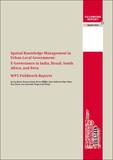|
Regardless of the motivation driving their development, it has been assumed that megaprojects play an important role in shaping the future of large cities, at all scales, through various means: changes in land use, dislocation of people, changes in employment and local economies, distribution of environmental costs, to name a few. As such, it can be assumed that they are influencing the resilience of cities, their future capacity to resist or recover from exogenous shocks.
Megaprojects, often designed by prominent architects and planners operating transnationally, foster the dissemination of new urban forms and spatial patterns, often without much local awareness about these imports. In that sense they cause displacements, both creative and destructive. Because of the manner in which megaprojects are conceived and implemented, they retrace in profound ways the boundaries between private and public space, and redefine access to public goods and to mobility.
|
Recent Chance2Sustain Publications |
|
|
|
|
|

